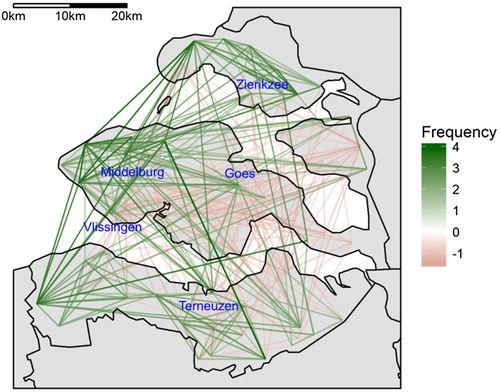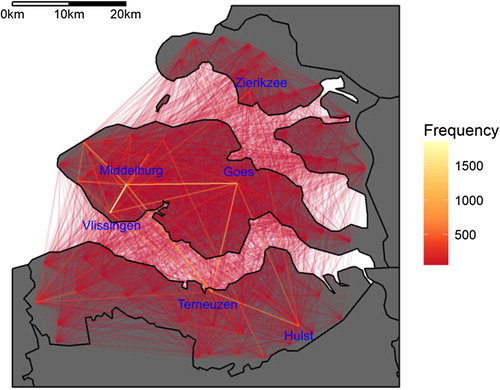Figures & data
Figure 1. Number of webpages plotted against the number of unique occurrences contained in these pages. Source: Brunner, Mališ, Reichert, and van Agtmaal (Citation2017).
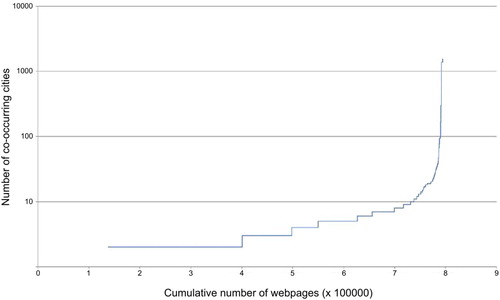
Table 1. Potentially biased place names.
Table 2. Gravity model, place name disambiguation and toponym co-occurrences (dependent: Ln Total co-occurrences).
Figure 2. Observed spatial organization of the Netherlands based on the pattern of toponym co-occurrences.
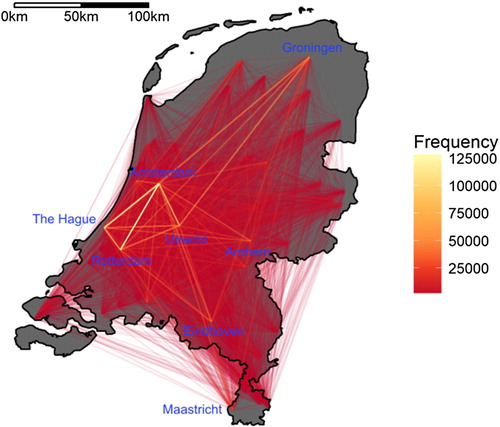
Figure 3. Observed versus expected relations between Dutch places, based on toponym co-occurrences.
Note: For clarity of the visualization, only standardized residuals ≥2 and ≤−1 are displayed.
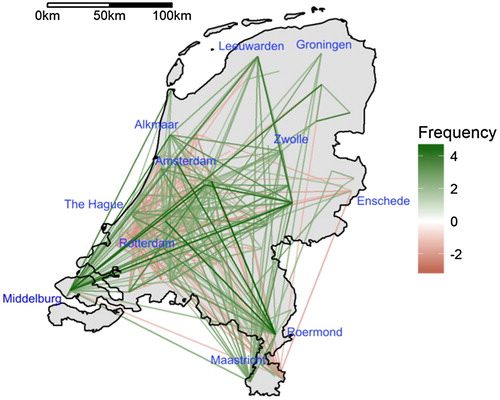
Table 3. Places that are relatively more strongly and more weakly related to other places.
Figure 5. Observed versus expected relations between places in Zeeland, based on toponym co-occurrences.
Note: Given the absence of ‘zeroes’ in our data and the problem of overdispersion when applying the nowadays increasingly used Poisson regression, we opt for conventional OLS which also leads to better model fits.
